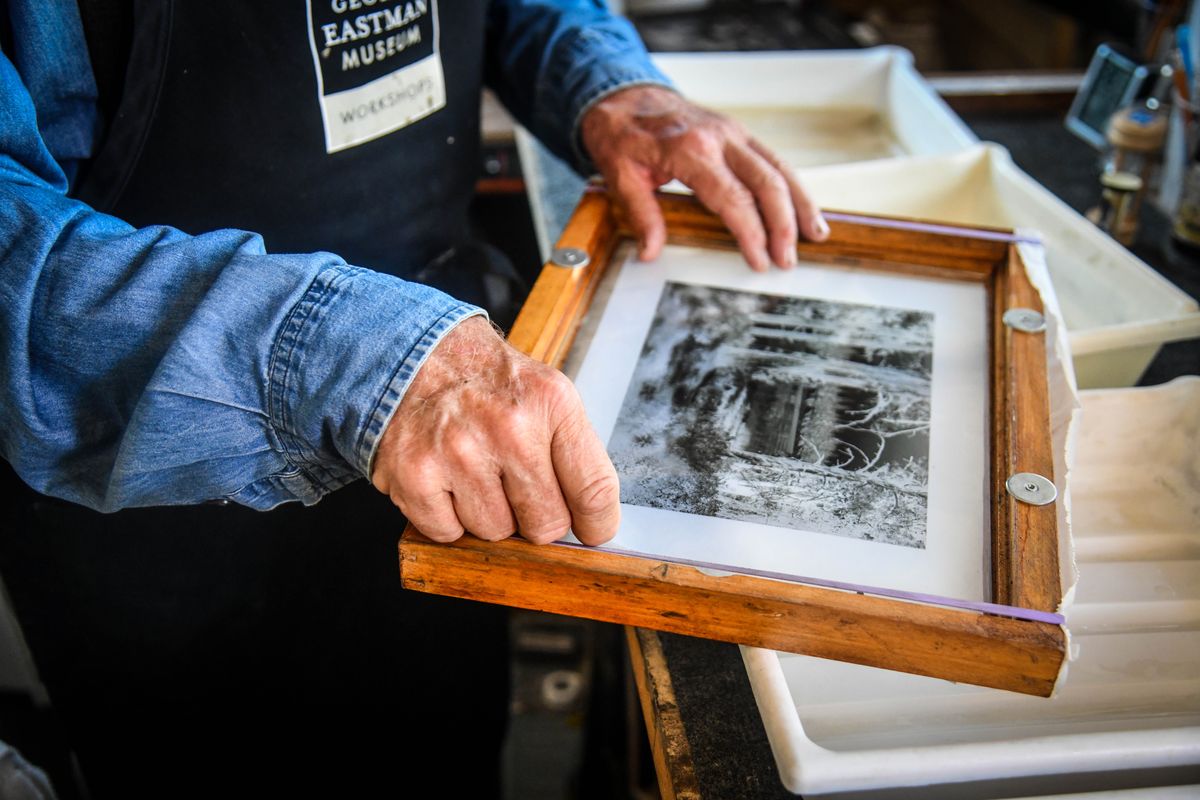Pandemic projects: College instructor turns back porch into photo lab

After this past year, the adage “necessity is the mother of invention” might well be amended to “the pandemic was the mother of invention.”
At least that proved true for Greg Roth.
“It wasn’t a project I’d been wanting to do, but one I had no choice in doing,” he said.
Roth, who teaches both philosophy and historical photographic processes at Spokane Falls Community College, learned the building that housed the photo lab was going to be torn down.
“I remember playing around that building when I was a kid and my dad was stationed at Fort Wright. It was 95 years old,” said Roth, 74.
His father was a military photographer, and as a child, Roth became fascinated with photography when he served as his dad’s assistant at wedding shoots.
Roth mourns the loss of the historical structure.
“For a lot of us, it’s a personal sadness – generations of photographers trained there. Buildings like that create more than space, they create atmosphere.”
The college is planning to build a new photography/fine arts building, but since June 2020, classes are taught in a different building with much less space. After teaching there for 22 years, Roth had a lot of equipment and no place to put it, so he decided to move it to his north side home.
“I transformed my back porch into a space to do salt prints,” explained Roth. “Salt prints are one of the oldest forms of photographic printing.”
He enjoys teaching the technique that was the dominant paper-based photographic process for producing positive prints from 1839 until approximately 1860.
In true vintage fashion, he shoots photos with an antique Kodak D2 5X7 camera and uses an hourglass timer when he makes the prints.
Adding shelving to the enclosed porch gave him enough room to work, and offered easy access to his favorite exposure source–the sun.
Salt prints are made using acid-free art paper, soaking it in a solution of salt and water, letting it dry, and then soaking it in a solution of silver nitrate.
“That gives us something to print on,” Roth said. “One of the nice things about this is you can watch it happen.”
A photo negative is placed on the sensitized paper and affixed to an easel or frame and exposed to sunlight.
“If there’s no sun, I go downstairs to my darkroom.”
But that small darkroom didn’t allow enough space for other processes, which led to another pandemic-inspired innovation.
“I set up an ice fishing tent in the basement to coat glass plates in the dry plate process,” said Roth. “I tell everyone that asks about the ice fishing tent in the basement that the aquifer runs under my house and let them imagine.”
He’s since moved the tent to the garage to give him more room to work. Roth also made a portable photo dark box for the back of his minivan.
More than just the physical additions to his house, the pandemic prompted him to revamp his teaching processes and adapt them so that he will be able to offer private classes in his home.
“We learned during the pandemic how important the human element is. These projects helped me through the isolation,” he said. “I’m committed to teaching these things. At my age, I’m aware I’m not going to have this knowledge forever, and I want to pass it on.”